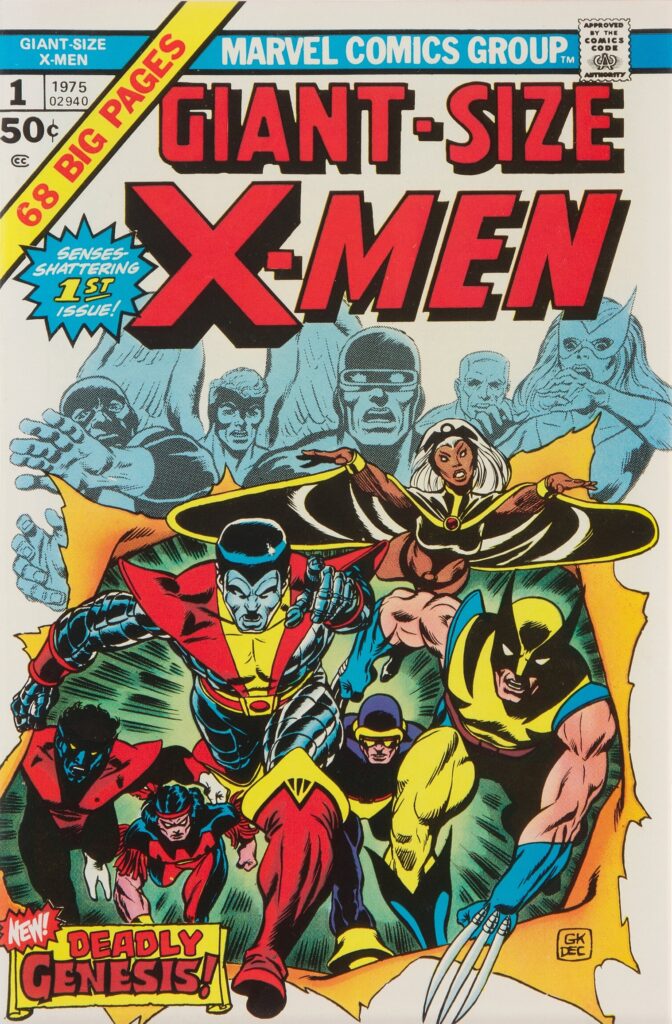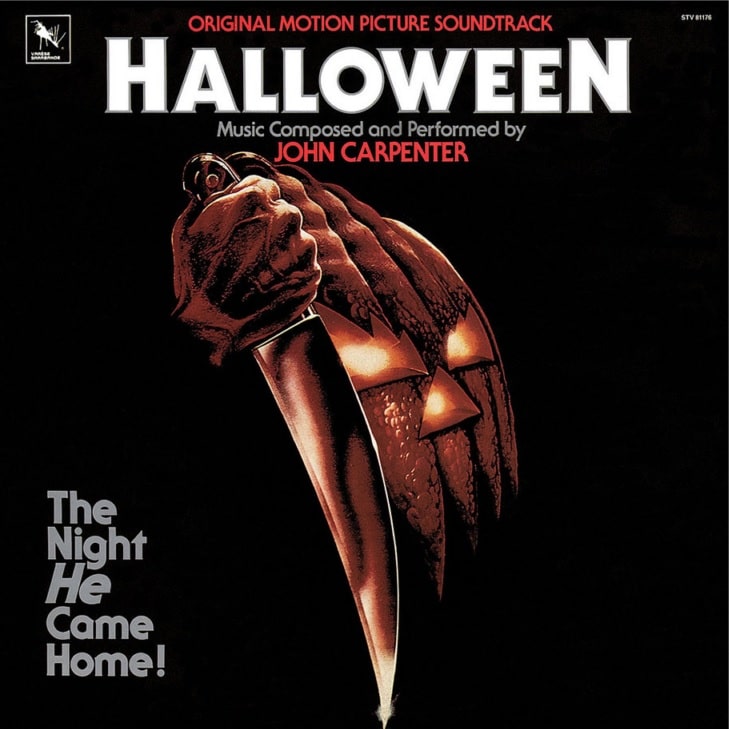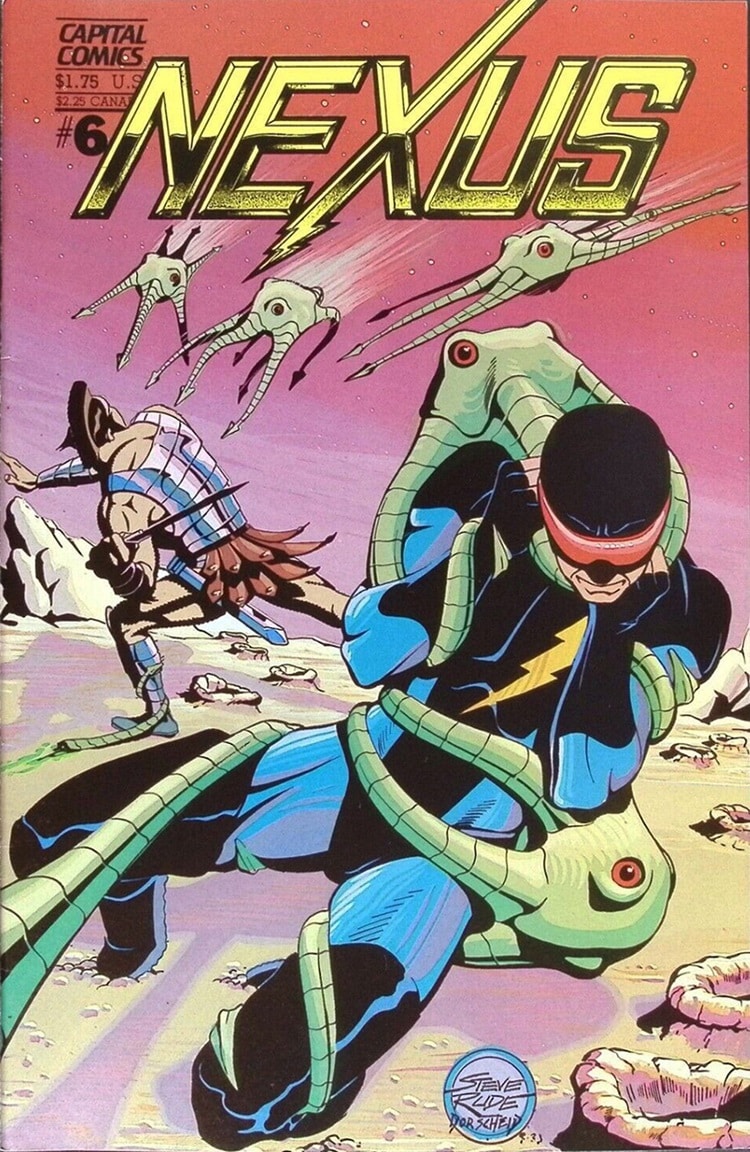A New Beginning: Giant-Size X-Men #1 Turns 50
By J.C. Vaughn, President of Gemstone Publishing and Amanda Sheriff, Gemstone’s Editor-Digital

For those who only know the Marvel superhero characters through the movies, TV shows, and streaming series, it might come as a surprise that the X-Men were not originally the powerhouse moneymakers for the company that they are today. Their biggest days came long after their debut.
Typically, comic characters have unique individual origins—alien refugees, spider bites, blasts of atomic energy, that sort of thing—but the X-Men all shared one common trait: genetic mutations. This connects the characters but never limits them since the mutations come in many forms. It’s a clever concept that has led to a huge cast of interesting characters.
Long before the expansive roster of mutants that we know today, the X-Men, created by Jack Kirby and Stan Lee in 1963, featured a small group of characters. Professor X led the young team of Cyclops, Marvel Girl, Iceman, Beast, and Angel in battles against villains like Magneto and helped them fight the bigotry they faced for being different. Despite a good start with incredible stories and art, the X-Men floundered and was unable to achieve the status of being one of Marvel’s top books.
The comic was initially released on a bimonthly schedule, turning into a monthly book that started with X-Men #14 (November 1965) and ran until X-Men #66 (March 1970). Then Marvel stopped publishing new stories, choosing instead to reprint older X-Men issues, retitling them as X-Men #67 to #93. Interest in the title had already started to decline and the lack of new stories didn’t help.
As this was happening, Marvel introduced their Giant-Size comics initiative. Before crossovers and event stories became prevalent, Marvel would package their bigger stories in the Giant-Size line. Some of those included Spider-Man tangling with Dracula, Scarlet Witch and Vision’s wedding, and the debuts of characters like Multiple Man, Tigra, and Lilith. Perhaps no title or set of characters benefited from the Giant-Size line more than the X-Men, whose landmark new issue jumpstarted their waning popularity with an infusion of new characters and revitalization of old ones.
Giant-Size X-Men #1, cover dated May 1975 and published 50 years ago, was a pivotal turning point in X-Men comics, pumping new life into what had become stagnant. Writer Len Wein and artist Dave Cockrum set up the story with the original X-Men team missing on the island of Krakoa and Professor X seeking help to save them.
It starts in Germany, where Professor X saves Kurt Wagner/ Nightcrawler from an angry mob, and then he recruits Wolverine in Canada (just after his strong start in Incredible Hulk #181 (November 1974)). Professor X seeks out reformed villain Banshee, then he heads to Kenya to ask Ororo Munroe/Storm to use her wonderous gifts to help the world. In Japan, he gets old acquaintance Sunfire on the team; in Russia, he persuades the young hero Piotr Rasputin/Colossus to leave his home; and in Arizona, he convinces John Proudstar/Thunderbird to join the team.
Once the team is gathered at the professor’s school, he psychically teaches them English and gives them shiny new costumes. Cyclops informs the recruits that he, Jean Grey, Iceman, Angel, Polaris, and Havok had been sent to Krakoa to find a new mutant. Instead, the whole team disappeared, and Cyclops was sent home with a fuzzy memory of what happened. The new team heads to Krakoa and they find a temple in the center of the island where the original X-Men are imprisoned by vines that appear to be feeding off of them.
After the new team frees the old team, Angel informs them that Krakoa is the mutant and all living organisms on the island are connected to its consciousness. Realizing that the island intends to feed off all of them, Professor X psychically attacks from offsite while Storm and Polaris work together to supercharge her magnetic powers. The power of the blast they create disrupts Krakoa’s gravity and sends the mutant out into space, and Iceman keeps the team safe by encasing them in an ice dome. Returning home when they are out of danger, the group questions how they will work together as a larger team of 13 X-Men. The concern over the team size is proven to be unnecessary as the X-Men became a hit again and led to the creation of many offshoots, team-ups, and epic multi-character battles.
Giant-Size X-Men #1 was the first new X-Men story in five years, and by the time that it was published, the regular X-Men book was practically canceled. Instead, the Giant-Size issue revived the title, becoming a quintessential Bronze Age key and leading to the broad scope of X-titles we see today.
“Len Wein’s script for Giant-Size X-Men #1 began, ‘From the ashes of the past there grow the fires of the future!’ That was probably the hope of the 1975 release half a decade after The X-Men (with #67) began to feature reprints and the stars were dispersed to other characters’ adventures.
Now, the future was at hand. And “The All-New, All-Different X-Men” took the cover in #94 (August 1975),” comics historian and Scoop columnist Maggie Thompson said.
“Some have commented that Giant-Size X-Men #1 was one of the many signs of the industry’s characters and storytelling moving from what was termed the Silver Age (attracting teens in the 1960s) into the Bronze Age (attracting teens in the 1970s). Stan wrote in Giant-Size X-Men #1’s installment of Marvel Bullpen Bulletins, ‘Who says this ain’t the Marvel Age of Sensational Second Chances?’” Thompson continued.
The team that Wein and Cockrum established was far more multi-national than had previously been seen. Professor X gathered a group from around the world, including a woman from Kenya and men from Russia, Germany, Ireland, Japan, Canada, and a Native American.
It made sense that an X-Men book would feature a diverse cast of characters, given their united struggle against being treated unfairly for being mutants. This new team—including a German character just 30 years removed from World War II, a Russian/Soviet character during the Cold War, and a Black woman (underrepresented in comics)—took the theme of acceptance and embracing those who are different into the real world.
“While the X-Men had used mutants as a metaphor for the Civil Rights movement, Giant-Size X-Men #1 updated that concept with actual multi-ethnic representation. The franchise would soon come into its own when writer Chris Claremont and company took this template and leaned into the new cast’s interpersonal relationships. The result was an irresistible blend of superheroics and soap opera that would redefine mainstream comic books for the Bronze Age,” Bronze Age historian and Scoop columnist T. Andrew Wahl said. “Its success fueled the rise of other fan-favorite series, such as The New Teen Titans and The Legion of Super-Heroes, and helped drive the emergence of the fan-centric direct sales market. It’s hard to underestimate the historical impact Giant-Size X-Men #1 had on the Bronze Age and beyond.”
Their multicultural makeup was just one of the aspects that made the new characters so appealing. The weather-controlling Storm is a regal, formidable alpha-level mutant who became an indispensable team leader. Nightcrawler is an agile acrobat and teleporter who has saved many mutants by pulling them out of dangerous situations. Colossus is a heavy hitter who protects his team through metal mimicry and Thunderbird is a great fighter with exceptional tracking abilities.
Rather than trying to revive a slate of older characters or create an entirely new roster, Wein and Cockrum made the savvy decision to incorporate established characters (Professor X and Cyclops), relatively new (Wolverine) and underutilized (Banshee) characters, and new characters (Nightcrawler, Storm, and Colossus). What Wein and Cockrum did was set the stage for Chris Claremont and Dave Cockrum and then Claremont and John Bryne, and turned it into Mavel’s top book, something it had never been.
Giant-Size X-Men led to the beginning of new stories, rather than reprints, that started in X-Men #94 (August 1975). The “Dark Phoenix Saga” that began in Uncanny X-Men #129 (January 1980) saw Jean Grey bonding with the cosmic entity. “Days of Future Past,” starting in Uncanny X-Men #141 (January 1981), sent Kitty Pryde back in time to prevent mutant-kind from being eliminated. The introduction of the Brood in Uncanny X-Men #155 (March 1982), the Trial of Magneto in Uncanny X-Men #200 (December 1985), and the “Age of Apocalypse” crossover story in 1995 are just a few of the other significant storylines. Plus, the X-Men inspired spinoff teams like X-Factor and the New Mutants and many new characters such as Deadpool and Gambit. The growth and popularity of the X-Men comic led to adaptations in other forms of media, including animated series, several films, video games, toys, and more.
With its character introductions and breathing new life into the title, Giant-Size X-Men #1 has thrived on the secondary market. In June 2024, a CGC-certified 9.9 copy sold for $170,000 – the title’s record-high price. A CGC 9.8 reached $36,000 in April 2025, and the CGC 9.6 Winnipeg pedigree copy hit $22,000 in 2021. Copies in mid-grade can be found in most collectors’ budgets. In late 2024 to early 2025, a CGC 8.5 sold for $2,950, a CGC 7.0 for $1,800, a CGC 6.0 for $1,560, and a CGC 4.5 for $1,350.





